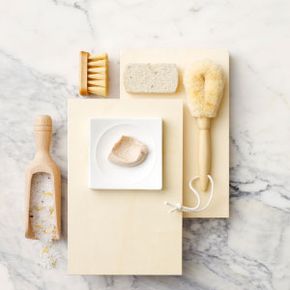Your skin, which is the body's largest organ, has a pretty intense workload. Essentially, it acts as a protective wrapper, keeping everything underneath it safe from daily threats such as the harsh effects of the sun, wind, pollution and germ-filled grime. In the line of duty, the skin on your face and body takes quite a beating, which can leave it dry and flaky. But you don't have to walk around with a dull complexion and ashen skin. There's an easy way to rejuvenate your skin -- you can exfoliate it.
Exfoliation is a process that removes dead skin cells from the upper layer of the skin, revealing the healthy skin underneath. Regular exfoliation, which can be beneficial to many areas of your body, including your face, arms, legs and feet, can help keep skin looking fresh, removing any dry patches or flakiness. There are different approaches necessary for each area of your body -- you wouldn't want to use the same methods, tools or products on your face as you would on your feet, for example. Furthermore, certain exfoliation techniques work best with certain skin types. So it's a good idea to know whether you have oily, dry, combination or sensitive skin before embarking on an exfoliation regimen.
Advertisement
There are many choices -- from cleansers and body washes to scrubs and loofahs -- that aid in the exfoliation process, so the task may seem a bit daunting at first. But once you sort through all of the available exfoliants, you can begin your own exfoliation routine and look forward to bright, glowing skin.
To learn how you could benefit from the addition of exfoliation to your regular skin care regimen, keep reading.
Advertisement


